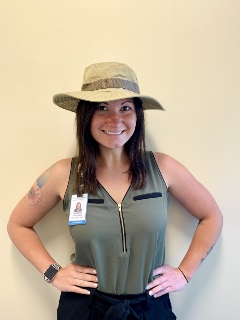Even for the healthiest of patients, it can be hard to remember when they saw a doctor, what clinic they visited, and the clinicians or specialists who treated them. Yet many providers count on patients to provide their complete care history in-person, during a visit. It’s unrealistic and, in some cases, life threatening, as the patient-reported data can be incomplete or inaccurate.
 I recently sat down with Maggie Shalagan, Lead Preventive Health Coordinator, at Northeast Medical Group (part of Yale New Haven Health), to hear how Surescripts Record Locator & Exchange is working for her and her team. Fun fact: Maggie is affectionately and, turns out, appropriately known by her peers as a “Health Ranger”. In short, she is responsible for making sure patients complete the appropriate health maintenance and prevention screenings.
I recently sat down with Maggie Shalagan, Lead Preventive Health Coordinator, at Northeast Medical Group (part of Yale New Haven Health), to hear how Surescripts Record Locator & Exchange is working for her and her team. Fun fact: Maggie is affectionately and, turns out, appropriately known by her peers as a “Health Ranger”. In short, she is responsible for making sure patients complete the appropriate health maintenance and prevention screenings.
Record Locator & Exchange lets healthcare providers quickly see where patients have received care and gives providers access to related patient records, from across all 50 states, regardless of care setting and EHR system used. And while Yale New Haven Health uses it to access summaries of historical patient visit locations (6.8 million times last year), Maggie’s role in Preventive Health has her using it exclusively to identify screenings for colon, breast and cervical cancer, as well as diabetic eye and foot exams, performed anywhere across the country.
With the nation’s most robust record locator service, Surescripts has access to patient care locations for 258 million patients, and in 2018, Surescripts identified more than 108 million links to clinical document sources nationwide. Furthermore, 106,000 clinicians used it in 2018, a 105% increase over 2017.
When asked how she identified where patients received care or screenings prior to using Record Locator & Exchange, Shalagan says the burden was placed on the patient. “We were doing our best, but often times the patient would come into our office and tell the provider about it themselves, or worse, we wouldn’t know about it because the patient didn’t remember.” That disconnected process made it difficult to know which specialists were seen, what tests were performed, or who to call for more information.
And what about now? Shalagan explains that the location summaries accessed through Surescripts contain organization names, phone numbers, specialist names and specialties that can be used to proactively prepare for a patient visit. For example, she can see that a patient has been seen by an ophthalmologist and is up to date on the necessary screenings, and she can note this in the patient’s chart, avoiding the need to wait for the patient to come in and share this information. When it’s unclear if the patient completed a screening or more information is needed, the location summary can be used to identify and contact the provider for additional clinical information. In fact, Shalagan requests a Surescripts Location Summary document about 95% of the time (skipping this step just 5% of the time, if she knows the patient is coming in for an appointment the same week).
Maggie also shares that their patient satisfaction scores have indirectly improved as a result of Record Locator & Exchange. “Reducing the dependency on patient-reported data improves the quality and completeness of the data our providers use to make care decisions for their patients. And not having to chase patients down by phone has been life-changing. Now, I don’t have to rely on the patient, I turn to Surescripts first.”
Of course, I couldn’t let her go without asking how she earned the title “Health Ranger”. “Some rangers protect land, others protect resources. But in my position as Lead Preventive Health Coordinator, I protect peoples’ health.”
To learn more about how Surescripts Record Locator & Exchange, take a look at our 2018 Impact Report: Clinical Interoperability.


 Dean Riggott Photography
Surescripts
Dean Riggott Photography
Surescripts
.jpg)


